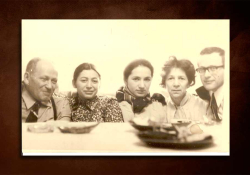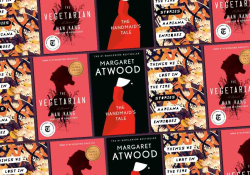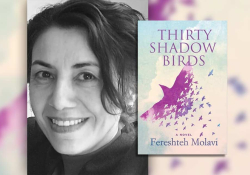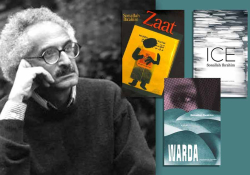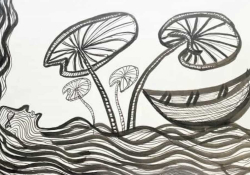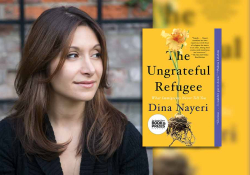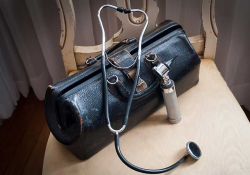Signs of Ethnic and Cultural Genocide in Ukraine: The Murder of Children’s Book Writer Volodymyr Vakulenko
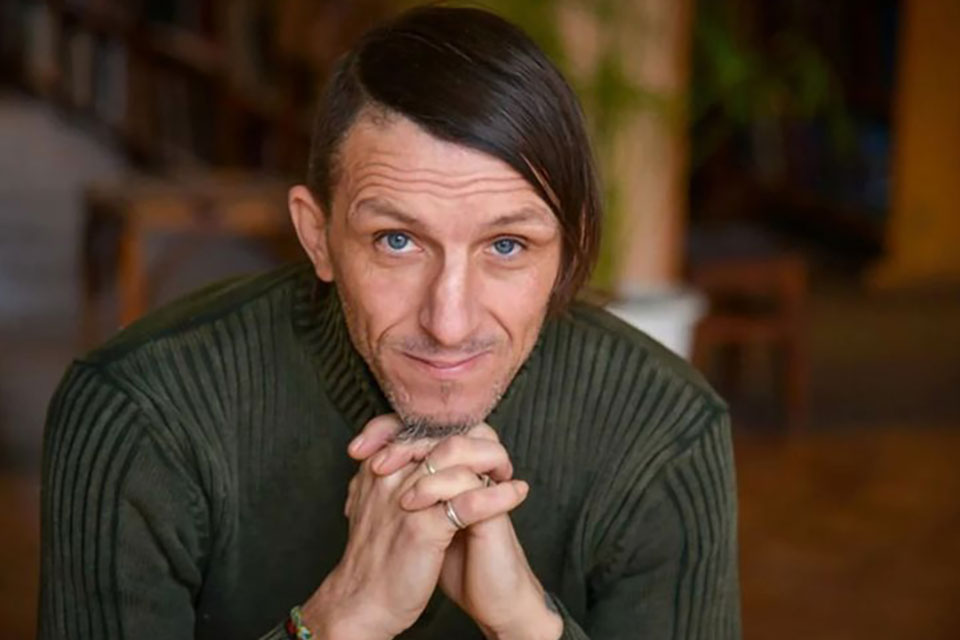
Ukrainians and the Ukrainian language and culture have been repressed and russified for over two centuries by both tsarist Russia and the USSR. Michael M. Naydan looks at the evidence for Russia’s ongoing genocidal tactics in Ukraine since February 2022.
On November 28, 2022, DNA tests confirmed that it was the body of Ukrainian children’s book writer Volodymyr Vakulenko that had been found in grave number 319 in a forest on the outskirts of the town of Izyum. When his body was exhumed, reports indicated that he had been left outside in the elements for at least a month before he was buried, so facial recognition was impossible. His long hair at first may have indicated to local authorities that it was a woman buried in the grave, but visible tattoos on his arm initially suggested that it might have been his body. It took several months to identify him, only after DNA samples were provided by his parents, who had been caught behind enemy lines.
After Ukrainian forces liberated the Izyum region in September 2022, it was learned from Vakulenko’s neighbors that on March 22 the Russian invaders, whom Ukrainians call “the horde” or “Orcs” for their ruthless cruelty to the civilian population, first came to Vakulenko’s house in the village of Kapytolivka to confiscate his cell phones, documents, and literary writings. The next day they came for him, and he was arrested along with his autistic teenage son Vitaly. They stripped Vakulenko to examine his tattoos and then beat him viciously. Both he and his son were released later that day. But on the morning of March 24, the Ruzzian (ruzzkie as Ukrainians often call them now in the media) soldiers returned for him in a bus marked with the now-infamous large, painted, white letter Z, which is all too reminiscent of а swastika. They forcibly skirted him away, and he was never seen again—until his body was found in that grave among 447 tortured and executed souls. His autistic son was eventually released by Vakulenko’s captors and later found—but no longer with his loving father to care for him.
What did Vakulenko do to deserve such an awful fate? He loved his homeland—Ukraine. He spoke up vocally as an activist, particularly during the peaceful demonstrations of the Revolution of Dignity (also known as the Euromaidan) at the end of 2014. In altercations with violent hired thugs (called titushky) of the corrupt former president Viktor Yanukovych’s regime, he was wounded in Marinsky Park not far from downtown Kyiv. That experience prompted him to serve as a volunteer in support of Ukrainian troops in the Donbas after Russia illegally annexed part of it in 2014. The Russians at that time began a proxy war against Ukraine that continued for eight years and that had already killed over fourteen thousand Ukrainians over eight years, even before the more recent massive invasion. At the time of his arrest by Russian forces in September 2022, Vakulenko was not serving as a volunteer and was unarmed. He was a civilian just taking care of his autistic son, whom he had been home-schooling because of the boy’s disability. He was killed execution-style with two shots from a Russian Makarov pistol.
Vakulenko, who often published under the last name Vakulenko-K., fought mostly with his pen instead of a sword.
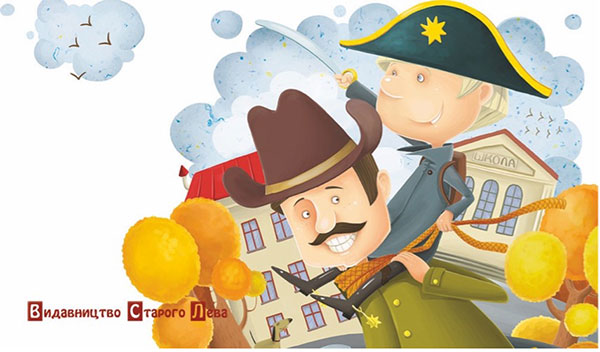
(Old Lion Publishers, 2014) /
Cover design and illustrations
by artist Natalka Haida
Vakulenko, who often published under the last name Vakulenko-K., fought mostly with his pen instead of a sword. He fought with the Ukrainian word for the future of the country, and especially for the children. He was born on July 1, 1972, in the village of Kapytolivka in the Izyum region of Kharkiv oblast, where he continued to live at the time of his arrest and execution. He had been married twice: to his first wife, Vladislava, in 1995, and to his second, Vitaliya, in 2008. He shared a son with each of them but was divorced at the time of his death at age fifty. Sharing an autistic child is a severe stressor in a relationship that makes it difficult for most marriages to survive. He persevered on his own, however, as his son’s caregiver and provider.
Vakulenko worked as an editor, journalist, and translator, authoring thirteen books in his drastically attenuated lifetime, including the children’s books The Sun’s Family (2011) and Daddy’s Book (2014). The latter has been reissued by Old Lion Publishers in Lviv, with all proceeds, according to a press release, going directly to support his family and particularly his autistic son. He earned numerous awards for his writing, including a Silver Tryzub (Trident) award, a Coronation of the Word award, and the Oles Ulyanenko Prize.
Regrettably, Vakulenko is far from the only Ukrainian cultural figure killed in the war. The Russians have intentionally targeted Ukrainian cultural institutions and individuals in their unrelenting assault against Ukraine. During the perpetration of the infamous Bucha atrocities, where many victims were shot in the back of the head with hands tied behind their backs, for no reason they executed Oleksandr Kysliuk, a well-known translator from ancient Greek and Latin. In Kherson, the Russian occupiers executed Yuri Kerpatenko, the chief director of the Mykola Kulish Kherson Musical and Drama Theater. He was murdered in his own apartment. The former principal ballet dancer and renowned dance teacher Oleksandr Shapoval was killed in battle in September 2022 by Russian forces near Maiorske in Donetsk oblast. He had volunteered to defend his homeland from the invaders. Sadly, the lengthy list of significant Ukrainian cultural figures killed during the Russian invasion keeps growing day by day. PEN Club Ukraine has been keeping track of these deaths on their website.
Just prior to the Ukraine invasion, the US government reported that Putin’s regime, in fact, had prepared an extensive hit list of prominent Ukrainians who were to be rounded up, imprisoned, or killed after the Russians’ planned swift military takeover of Ukraine in three days. This tactic of killing off the cultural elite is nothing new for the imperialistic Russian empire in all its hypostases, which has committed multiple atrocities against Ukraine and Ukrainians. During the so-called Executed Renaissance (Rozstriliane vidrodzhennia) of the late 1920s and early 1930s, George S.N. Luckyj has noted in the updated version of his book Literary Politics in the Soviet Ukraine, 1917–1934 (Duke, 1990) that over seven hundred of Ukraine’s finest writers, politicians, and cultural activists were liquidated by Stalin’s regime or forced into committing suicide. These included the brilliant prose writer and essayist Mykola Khvylovy, the playwright Mykola Kulish, the poet and classics scholar Mykola Zerov, and the prose writer and translator Valerian Pidmohylny, all of whom represent the pinnacle of Ukrainian modernism. Scores of Ukrainian writers and cultural activists were assaulted, imprisoned, or killed from the 1960s to the 1980s by the Soviets. These include the brilliant popular songwriter and cultural icon Volodymyr Ivasiuk, who was brutally murdered by the regime; the poet Vasyl Symonenko, who was severely beaten by Soviet agents and later died of his injuries; and the brilliant poet Vasyl Stus, who died in captivity as a political prisoner. History regrettably continues to repeat itself in our time.
This tactic of killing off the cultural elite is nothing new for the imperialistic Russian empire in all its hypostases.
Even prior to the invasion that started on February 24, 2022, Russia was targeting Ukrainian cultural figures. Two of the most prominent examples include the Ukrainian filmmaker Oleh Sentsov and the journalist/writer Stanislav Aseyev, who were both tortured and imprisoned by the Russian proxy regime (the former in Crimea and the latter in the Donbas) before they were released in prisoner exchanges.[i]
Putin’s regime has focused not just on eradicating cultural figures but also annihilating sites of great significance to Ukrainians and Ukrainian historical identity. Soon after the invasion of February 24, 2022, the invaders burned down a museum in the town of Ivankiv containing the paintings of Ukrainian national treasure, the twentieth-century folk artist Maria Prymachenko. At an exhibit of her paintings in Paris, Pablo Picasso said: “I bow down before the artistic miracle of this brilliant Ukrainian.” A sampling of images of her paintings, which are representative of playful primitivist art, can be found on the Artland website. Reports later emerged that the courageous museum staff and local residents saved most if not all of the paintings from the fire. Theaters, libraries, monuments, monasteries, and churches have been systematically destroyed by the Russian invaders.
The Drama Theater of Mariupol was bombed in March 2022 with six hundred people sheltering inside it with the word “ДЕТИ” (CHILDREN) written in Russian in large block letters on either side of it so Russian warplanes could see it from the air. It was bombed anyway. Thousands of works of art have been stolen from museums in the city of Mariupol alone.
There were precision missile strikes in Skovorodynivka on the Hryhory Skovoroda Literary Memorial Museum on May 6, 2022, in an attempt to erase the memory of Ukraine’s first great poet and philosopher of the eighteenth century.[ii] It is located in a village twelve miles south of the Russian border with a population of four hundred people with no military targets anywhere near it. Given its isolation, the targeting had to have been intentional.
Countless other national treasures and cultural artifacts have been stolen and taken to Russia along with the abduction of thousands of Ukrainian children, who represent the future of the country. Thousands of historical Ukrainian buildings have been damaged or destroyed by both intentional and indiscriminate bombing, turning once-beautiful cities such as Kharkhiv into rubble, and totally eradicating Ukrainian villages caught in the crosshairs of the invasion.
Museum curators have been targeted as well. Some have been abducted and are still missing. “Houses of Culture” (i.e., local cultural centers) have been targeted and destroyed. In occupied territories, literary works and textbooks in Ukrainian have been removed from libraries and schools and destroyed. The use of the Ukrainian language in the temporarily occupied territories was suppressed and eliminated from schools. And media (the internet and TV channels) in Ukrainian were jammed or blocked entirely. This is what happened, too, prior to the current invasion in the Russian occupied areas of Luhansk, Donetsk, and Crimea from the earlier 2014 invasion. PEN America recently issued a report on the cultural destruction wrought by the Russian war.
Ukrainians and the Ukrainian language and culture have been repressed and russified for over two centuries by both tsarist Russia and the USSR.[iii] In the nineteenth century the use of the Ukrainian word was banned in print and in public performances by tsarist decrees.[iv] The plan was to drive the Ukrainian language into oblivion and force the Ukrainian population to speak Russian exclusively. The USSR continued that policy of russification except for a brief period in the late 1950s and early 1960s known as the “thaw” under Nikita Khrushchev and during Mikhail Gorbachev’s policy of glasnost (openness) in the mid- to late 1980s until Ukrainian and Russian independence in 1991. Putin’s Russia of today is hellbent on continuing the policy of erasing Ukraine from the face of the earth and forcibly incorporating it into a new Russian empire. That is why Putin delights in saber-rattling with talk of using nuclear weapons. Over five million Ukrainians were killed during the Holodomor of 1932–1933, a famine imposed intentionally by Stalin’s regime.[v] Countless others were killed in what Yale historian Timothy Snyder describes as the bloodlands during and between the world wars. Yet Ukrainian identity continues to survive and thrive despite all efforts to eliminate it.
Ukrainian identity continues to survive and thrive despite all efforts to eliminate it.
When will the madness of the current invasion end? Only when the majority of the Russian people eliminate their collective aggression and desire to dominate others; only when the majority of the Russian people stop feeding the imperialist in their psyche; only when the Russian people rise up in sufficient numbers to demand the end to this war and all wars from their leaders and freedom for themselves.
Pennsylvania State University
Author’s note: My gratitude to Svitlana Budzhak Jones for her extremely useful comments, corrections, and suggestions for emendations to my penultimate draft that have served to improve this essay.
Editorial note: The July 2022 issue of WLT, guest-edited by Katie Farris and Ilya Kaminsky, featured firsthand reportage by poets, novelists, playwrights, artists, journalists, editors, photographers, translators, and culture workers from the cities of Odesa and Kharkiv. The issue was dedicated to the people of Ukraine.
[i] A collection of Sentsov’s stories have been translated into English and published by Deep Vellum. Asyeev’s memoirs of his imprisonment have been translated into English.
[ii] For my translations of the religious philosopher-poet, see The Garden of Divine Songs and Collected Poetry and The Complete Correspondence of Hryhory Skovoroda.
[iii] For more, see Britannica’s article on russification.
[iv] The Internet Encyclopedia of Ukraine includes a brief discussion of the Valuev Circular and the Ukase at Ems that targeted the destruction of the Ukrainian language.



